[This paper should be read with “An outline history of and background to the Israeli-Palestinian conflict” and “An outline history of anti-Semitism” in order to gain a balanced picture of both the Arab and Jewish aspects of the story].
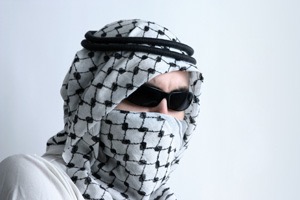
In order to understand the outlook and reactions of Arabs, including Palestinian, one must take seriously the long, tragic history of anti-Arabism. Anti-Arabism is prejudice or hostility against people of Arabic origin. It is considered to be the same as anti-Arab racism and is associated with “Islamophobia” (an irrational fear or prejudice towards Muslims or Islam)although it must be remembered that there are many Arab Christians. This has created sensitivities which influence how Arabs relate to the Western world.
There is a prominent historical cause of Arab suspicion of and resentment towards the West, namely the Crusades.
The reason for the Crusades
A great deal has been written about why the Crusades happened. Modern scholarship tends not to accept the old idea that the Crusades were simply acts of European colonialism carried out for economic reasons and to gain political power. (In fact the crusades were very costly to those involved). However, such views are still widespread and it is true that there were aspects of colonialism and power-politics.
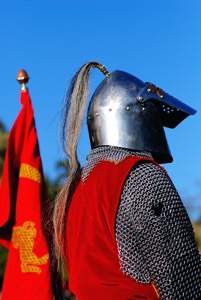
Modern scholars believe that the Crusades were carried out for religious reasons. It is interesting that since the late 19th century the Crusades have been known in Arabic as “al-hurub al-salibiyya,” “The Wars of the Cross.”
The Crusaders took seriously the teaching of St Augustine on justified Christian violence, and they were supported by St Bernard of Clairvaux and St Thomas Aquinas. Such violence required a just cause and right intentions. Fighting for justice was justified. There was also a heavy emphasis on the crusades being acts of personal penance. People joined up to achieve divine forgiveness. It is, of course, similar to the Muslim concept of jihad, holy war.
The major cause of religious concern was the Muslim conquests of much of Eastern Christendom. They had conquered two thirds of the Christian world in the East: the Middle East, North Africa and Asia Minor. More or less only modern Greece remained Christian. Now the Muslim forces were moving towards Constantinople and Europe. There were already Muslim attacks in Spain and Portugal. Byzantine Emperor Alexius I appealed to Pope Urban II for military help against Muslim attacks in the East. This fired up the passions in Europe for the First Crusade which was preached as a campaign to liberate Jerusalem from the Muslims. So the Crusades were by no means unprovoked (see below).
The Arab memory of the Crusades
Arabs tend to remember the Crusades rather like Jewish people remember the Holocaust.
The carnage and the desecration caused a lasting trauma to Muslims. When I was Rector of Christ Church, Jerusalem I decided to invite local Muslims to a Reception. One shopkeeper, having received an invitation, approached me angrily and very soon was talking about the Crusades. He pointed at my clerical collar and said: “I’m sorry to say this but when I see that it makes me think of the devil.”
It is necessary to approach accounts of the crusaders’ violence critically. It is a controversial area. There may be elements of exaggeration even amongst Christian eyewitnesses (particularly when Abbot Raymond of Aguilers writes: “In the temple of Solomon, the horses waded in the blood up to their knees, nay, up to the bridle. It was a just and marvellous judgement of God, that this place should be filled with the blood of unbelievers.”). Then there can be anti-Christian propaganda as well as uncritical folk tales. I certainly do not say this to whitewash the crusaders but rather to further the truth.
On the other hand, bearing in mind that no history is completely objective, it is important to remember that some Roman Catholic writers may tend to be over-zealous in defending the Popes who instigated the crusades. Also writers who tend to be anti-Arab or anti-Muslim may fall into the trap of whitewashing the crusaders. Such views will be strengthened by the violent actions of Muslim fundamentalists today.
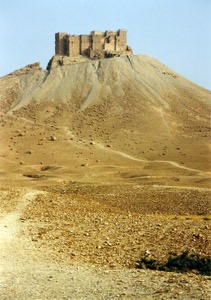
Some scholars comment that we must enter into the outlook of the crusaders, rather than judge them by 21st century standards. It was accepted that both the buildings and the people of a city which resisted capture, as Jerusalem did, belonged to the invaders. It is claimed that, although many were killed, many were set free. The population of cities which did not resist capture were “left unmolested, retained their property, and allowed to worship freely.”[i]
Most of the time the crusaders and the Muslims lived largely at peace, in a political stalemate, trading with each other and even intermarrying. Crusaders often assimilated into Muslim culture and they made alliances with nearby Muslim states.
Jonathan Riley-Smith, Professor of Ecclesiastical History at Cambridge University and the author of several books on the crusades writes: “Many Muslims … still reckon that the crusades initiated centuries of European aggression and exploitation. Some Catholics want the pope to apologise to the world for them. Liberals of all stripes see the crusades as examples of bigotry and fanaticism. Almost all these opinions are, however, based on fallacies. The denigrators of the crusades stress their brutality and savagery, which cannot be denied; but they offer no explanation other than the stupidity, barbarism and intolerance of the crusaders, on whom it has become conventional to lay most blame. Yet the original justification for crusading was Muslim aggression; and in terms of atrocities, the two sides’ scores were about even.”[ii]
However, Professor Riley-Smith adds: “Ventures of this sort easily attract psychopaths, and no method was devised whereby the crusades could screen recruits for suitability. … The passions unleashed, when combined with the stresses of crusading, led to acts of unspeakable horror … [there were] many awful atrocities: ferocious pogroms against Jews that were features of the preliminaries of many crusades, gross examples of ethnic cleansing in which non-Christians were driven from towns of religious or strategic significance by deliberate campaigns of terror, and collapses in military discipline that led to appalling consequences for any wretches unlucky enough to be found in the crusaders’ path.”[iii]
It is important to realize that many Muslims, including respectable Muslim organizations do actually take the accounts of the carnage literally. For example, in the UK the Foundation for Science Technology and Civilisation (FSTC) is a respected educational entity which seeks to promote “an accurate account of Muslim Heritage and its contribution to present day science, technology and civilisation.” It holds conferences and teacher training seminars. It takes the accounts literally. Below (and in the footnotes) are some of the accounts concerned.
For many Arabs, therefore, the crusades are seen as an invasion by uncivilised, religiously-fanatical Barbarians sent by corrupt regimes. In the light of later European colonialism (e.g. the 20th century carving up of the Middle East between France and Britain), Israel is seen as a new crusader state. Some Arabs believe that the West has sought revenge ever since Saladin took Jerusalem back, hence its support for the State of Israel. In fact early European Zionists began to use the language of the crusades themselves. Since the 1950s America has been seen as a crusader state and such concepts are widespread amongst ordinary Arabs. A recent survey found they were taught in Saudi Arabian school textbooks. Osama bin Laden regularly uses such descriptions of the Western powers.
Contemporary accounts of the Crusades
In June 1097 about 60,000 people, including 6000 knights, started out for Jerusalem. Two years later, after much suffering, their numbers were down to 15,000, including 1500 knights. Most of their horses and pack animals were dead.
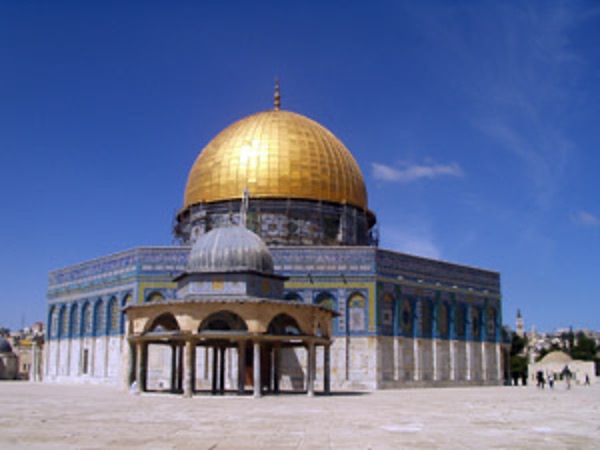
It is this force which, in July 1099, conquered Jerusalem and Iftikhar ad-Daula and his army were allowed to leave under safe conduct, but terrible violence was perpetrated against the remaining population. It is said that Jerusalem prior to the crusades was a place filled with a thriving trade, scholars and madrasas [schools]. The crusades destroyed all such wealth and, above all, scholarship. The Christian occupation of the Dome of the Rock and the Al Aqsa mosque by the Knights Templar was a terrible desecration in Muslim eyes. For 88 years there was a cross on the Dome of the Rock.
One historian[iv] describes how “the brains of young children were dashed out against walls; infants were thrown over the battlements; every woman that could be seized was violated; men were roasted at fires; some were ripped open, to see if they had swallowed gold; the Jews were driven into their synagogue and burnt; a massacre of nearly 70,000 persons took place …”
Abbot Raymond of Agiles, an eyewitness, wrote: “When our men took the main defences, we saw astonishing things amongst the Saracens. Some were beheaded, and that’s the least that could happen to them. Others were pierced through and so threw themselves from the heights of the walls; others after having suffered at length were thrown in to the flames.” I will add further gory details in the footnote.[v]
In late 1098 crusaders captured Ma’arat an’Numan, a Syrian city near Aleppo. Christian chronicler Robert the Monk wrote: “‘Our men …. walked through the roads, places, on the roofs, and feasted on the slaughter just like a lioness who had her cubs taken from her. They cut into pieces, and put to death children, the young and the old crumbling under the weight of years. They did that in groups…our men grabbed everybody who fell into their hands. They cut bellies open, and took out gold coins. Oh detestable cupidity of gold! Streams of blood ran on the roads of the city; and everywhere lay corpses. Oh blinded nations and destined to death; none of that multitude accepted the Christian faith. At last Bohemond brought out all those he had first invited to lock themselves in the tower of the place. He ordered that all old women be put to death, and also old men, whose age had rendered useless; then all the rest he ordered to be take to Antioch to be sold as slaves. This massacre of the Turks took place on 1 December (1098); on Sunday; but on this day not all work could be accomplished; so the following day our men killed the rest.”[vi]
William of Tyre: “The place was inundated with the blood …. We could not watch without horror that multitude of deaths, their limbs scattered laying on the ground on all sides, and the flood of blood inundating the surface of the ground.”[vii]
Raymond of Aguilers commented: “It was a just and splendid judgment of God that this place should be filled with the blood of the unbelievers … the city was filled with corpses and blood.”[viii]
Christian chronicler Fulcher visited Jerusalem December 1099 five months after it was taken and wrote: “Oh what a stench there was around the walls of the city, both within and without, from the rotting bodies of the Saracens slain by our comrades at the time of the capture of Jerusalem, lying where they were hunted down.”[ix]
Muslim attacks on Christians
It should be remembered that, although the excessive violence of the Crusaders cannot be justified, the Crusades themselves were not unprovoked. Between 634 and 1075 the Muslims conquered huge areas of the Christian world from India to Portugal and the borders of France, including the Holy Land. They threatened a complete takeover of Christendom, much to the alarm of the Christians.
Many Christians were killed, some being executed for not converting to Islam. Churches and monasteries, including the church of the Holy Sepulchre, were destroyed. Christians (and Jewish people) were dhimmis (second-class citizens) under Muslim rule and suffered violence and humiliation, e.g. being forced to wear distinctive clothing and being treated with contempt. They also had to pay the excessive jizyah tax to avoid being attacked.
In 1094 the Byzantine Christian Emperor Alexius Conenus I asked Pope Urban I for help to defeat the Muslims, and the Crusades began.[x]
Outline of the Crusades
Between 1099 and 1291 there were nine crusades (although sometimes the 5th & 6th are combined as are the 8th & 9th):
1. 1096-1099 The First Crusade
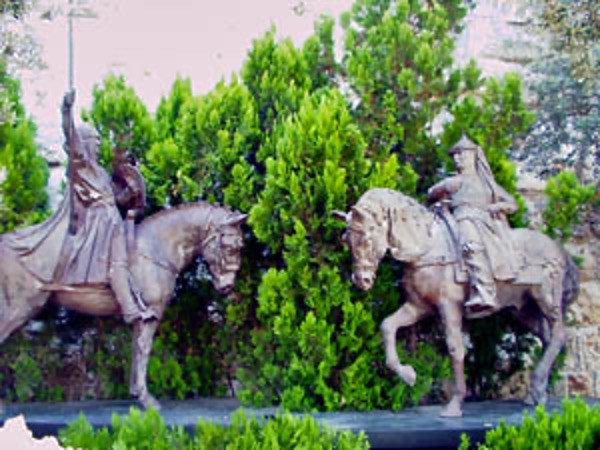
2. 1147-1149 The Second Crusade
This was a largely unsuccessful crusade by the French and Germans.
3. 1189-1192 The Third Crusade
In 1187, Saladin, Sultan of Egypt, recaptured Jerusalem. Richard I of England (Lionheart), Philip II of France and Holy Roman Emperor Frederick I led a crusade. Frederick drowned in 1190 and Philip left in 1191. the crusaders followed Richard almost to Jerusalem but, lacking food and water, they made a truce with Saladin and Richard returned home in 1192.
4. 1201-1204 The Fourth Crusade
The crusaders were diverted from their original purpose and sacked Christian Constantinople. This resulted in the Byzantine Empire being divided between the crusaders and Venice.
5. 1218-1221 The Fifth Crusade
The Fourth Lateran Council made a plan to recover the Holy Land using Hungarian and Austrian armies. But, after a defeat at Cairo in July 1221 they surrendered.
6. 1228-1229 The Sixth Crusade
This did not have the official blessing of the Pope.
7. 1248-1254 The Seventh Crusade
In 1260 Palestine became part of the Mameluke Empire. The Mamelukes were originally slaves of Egyptian Arabs. They practised tolerance but the land became impoverished. They conquered Antioch in 1268.
8. 1270 The Eighth Crusade
Louis IX of France went to the aid of Christians in Syria but was diverted to Tunis where he died.
9. 1271-1272 The Ninth Crusade
Edward I of England went to Syria but little was achieved before a truce.
1291 The Muslims captured Tripoli in 1289 and Acre in 1291 and the Crusaders finally left, except for mounting raids on the coast. The Muslim rulers therefore depopulated and destroyed coastal towns which impoverished the coastal area for centuries.
Post-Crusade history
1327: The Muslim Ottoman Turks capture Nicea from the Byzantines.
1371: The Ottomans invade Bulgaria and annex the Balkans.
1453-6: The Muslims conquer Constantinople, the capital of the Christian Byzantine Empire and bring the empire to and end.
1453-1600: The Muslims overrun the Byzantine Empire, thousands of scholars, scientists, artists, musicians, etc leave for Europe bringing about The Renaissance.
1461: The Ottomans annex Bosnia and Herzogovina then, in 1462, Albania.
1481-1492 Muslims expelled from Spain.
1517-1917 The Ottomans control Palestine.
1529 Muslims besiege Vienna
1565 Muslims besiege Malta. Protestant reformers are now teaching that crusade against Muslims is a sin.
1571 The Ottomans are defeated at the naval Battle of Lepanto which ends their dominance in the Mediterranean.
1683 The Muslims besiege Vienna again but after several weeks are driven out by European armies.
1798 Napoleon invaded Palestine. Arabs and Jewish people fled the land. Palestinian nationalism probably began to develop at this time because Palestinian Arabs revolted against Turkish rule.
1882 The first Aliyah (“going up to the Land”) of Jewish people took place as they fled from the Russian pogroms (persecutions of Jewish people). The Ottoman Turks were hostile to this return.
1905 The second Aliyah from Russia took place and Tel Aviv was founded by the Zionists.
1914-15 Between 85,000 and 100,000 Jewish people lived in Palestine by 1914, together with about 615,000 Arabs.
1916 The British said they would back Arab independence in exchange for Arab support in the war. Other countries, including the US supported Arab independence. The Arab Revolt against the Turks, led by Lawrence of Arabia, took place on this understanding. But at the same time the Anglo-French Sykes-Picot Agreement planned to divide Palestine between the British and the Allies with France being given Lebanon and Syria.
1917 Victorious British General Allenby entered Jerusalem and established British rule over the land. The Arabs felt betrayed by both the British Balfour Declaration (calling for a Jewish state in Palestine) and the handing over of Syria to the French because of the British promises of independence.
1919 The American King-Crane Commission was sent to Palestine to seek local opinion and the Arabs lobbied for Palestine to be annexed to Syria. They were not heard.
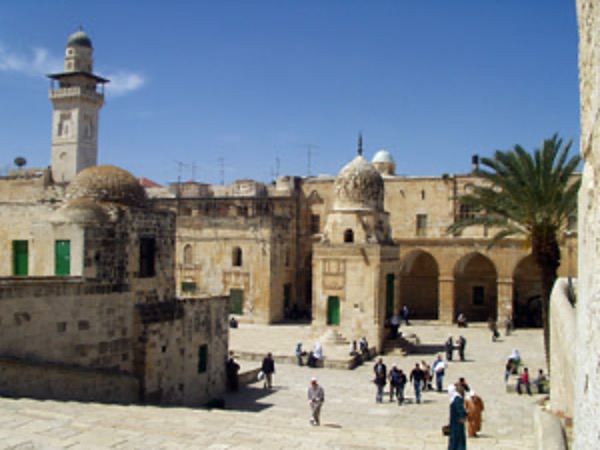
1929 There were Arab nationalist riots this year, partly caused by Arab fears that Jewish people were going to undermine Arab control of Temple Mount and the Al Aqsa Mosque.
1936 The Arab Revolt took place after the British killed a prominent Arab anti-British and anti-Jewish agitator. Hundreds of Jewish people and Arabs were killed.
1937 The British Peel Commission recommended partition of the land into an Arab state and a smaller Jewish state but this was firmly rejected by the Arabs.
1939-45 During World War II the British ruthlessly suppressed the riots and Hajj Amin El Husseini, the Grand Mufti of Jerusalem, fled to Iraq where he became a strong supporter of Germany.
November 29th 1947 On the recommendation of the United Nations Special Commission on Palestine (UNSCOP), the United Nations General Assembly decided by a two-thirds majority, contrary to strongly-held Arab opinion, that the land should be partitioned into Arab and Jewish states. The Arabs rejected the plan.
December 17th 1947 The Arab League Council decided to fight against the Jewish people They rioted and besieged Jerusalem. So began what Palestinians call the Nakhba (“Disaster”). Tragically there were massacres on both sides. There were well-documented instances (e.g. Ain al-Zeitoum and Er-Rama) where the Israelis demanded Muslims left their villages for Lebanon on pain of death. Some Israeli historians claim that many war crimes: murders, massacres, and rapes took place. But most Palestinians refugees made their own decision to flee the country for fear of their lives. In April 1948 most Arabs left Haifa. Some Arabs were told by Jewish forces that they were to be removed from their homes temporarily. But in many cases this led to permanent exile. In 1952 a memorandum from the Higher Arab Committee shows that Arab states did agree to take Palestinians until fledgling Israel could be destroyed although some Israeli historians claim that the Arab governments really wanted the refugees to stay in Palestine. Because the West was seen as supporting Israel they were blamed as well as Israel. This was seen by many as a new crusade, setting up a new crusader kingdom in Palestine.
Since 1948 the Arabs have suffered humiliating defeats at the hands of the Israelis, backed by the Americans. At the hands of the Israelis they have experienced:
- The killing of many Palestinians.
- Demolition of many homes.
- Uprooting of olive trees.
- Humiliating searches with excessive waits at border checkpoints.
- Border closures which undermine the Palestinian standard of living.
- Prevention from travelling to other Palestinian towns or even to their own farms.
- Extended curfews.
- Jewish settlements on Palestinian land.
The other side of the story, including Palestinian attacks on Israel and Israeli motivation, may be seen in “An outline history of and background to the Israeli-Palestinian conflict.” But the above is how the Palestinians see the conflict with Israel which causes resentment against Israel’s Western supporters.
Modern Anti-Arabism
According to surveys, 37% of Muslim Arab Americans have experienced discrimination (45% of students) since 9/11. It is claimed that some movies portray Arabs in the same way that Nazi movies portrayed Jewish people. The Christian Right, because of its strong eschatological support for Israel, is prone to anti-Arabism.
Over two thirds of Muslim and Arab Australians have experienced racism since 9/11.
In the UK, TV presenter Robert Kilroy Silk had to resign after writing an anti-Arab article in the Express on Sunday in January 2004.
Some Arab Problems with the Western World
1. The history of the Crusades
- (See above)
2. The history of Western Colonialism
- The arrogance of Britain and France in carving up the Middle East between them in the early 20th century, arbitrarily drawing national boundaries
- Palestinian Arabs feel betrayed by the Western powers who promised independence to them in return for assistance in the world wars.
3. Gentile Zionism
- Many Arabs see the establishment of Israel, with widespread Western support, on Islamic Arab land as arrogant and sacrilegious.
- Palestinians feel humiliated by Israel and its Western supporters (NB. Arab culture places supreme importance on honour and reputation).
4. Western Hypocrisy
- Arabs see many examples of Western hypocrisy. For example, some deeply resent that, for all its calls for democracy in the Middle East, the West did not recognize Hamas as the democratically elected Palestinian government. (the West also needs to be aware that Western-style democracy needs to be introduced very carefully – and maybe modified – in countries which are not fully ready for it, i.e. lacking political stability, traditions of tolerance and compromise, respect for minorities, more used to powerful dictators, etc.).
5. The Invasion of Iraq
- Many Arabs would see this as a further example of Western colonialism.
6. Islamophobia
- There are many Christian Arabs but Muslims resent Western Islamophobia.
7. Western Lifestyle
- The West is seen by many Arabs as affluent but morally decadent (thinking that modern films accurately portray the Christian West).
- Arabs can feel that Western culture is dominating and defeating Arab culture.
© Tony Higton
[i] Thomas F. Madden is Associate Professor and Chair of the Department of History at Saint Louis University. He is author of A Concise History of the Crusades and co-author of The Fourth Crusade.
[ii] Jonathan Riley-Smith, The Economist, December 23, 1995
[iii] Ibid.
[iv] J W Draper A History of the Intellectual Development of Europe; Vol II; Revised edition; George Bell and Sons, London 1875; pp 22-23
[v] [WARNING: This footnote contains gory details] Raymond continues: “We could see in the roads and in the places of Jerusalem bits and pieces of heads, hands, and feet. Everywhere we could only walk through cadavers. But all that was only little…” He wrote the Mosque of Omar; “There was so much blood in the old temple of Solomon that dead corpses swam in it. We could see hands floating and arms that went to glue themselves to bodies that were not theirs; we could not distinguish which arm belonged to which body. The men who were doing the killing could hardly bar the smoke from the corpses.” (Abbot Raymond of Agiles; in G. Le Bon: LA Civilisation des Arabs; Syracuse; 1884, p 249).
Radulph of Caen: “In Maarra our troops boiled pagan adults in cooking pots they impaled children on spits and devoured them grilled.” (In Janet Abu Lughod: Before European Hegemony; OUP, 1989 p.107). William of Tyre said common practices for crusaders to roast and eat flesh of Turks.
[vi] Robert the Monk in G Le Bon La Civilisation des Arabs; Syracuse; 1884 p. 248
[vii] A Boamama: l’Idee de croisade dans le monde Arabe hier et aujourd’hui, in De Toulouse a Tripoli, AMAM, Colloque held between 6 and 8 December, 1995, University of Toulous; 1997 pp 211-219, p 213.
[viii] Raymond of Aguilers: Historia francorum qui ceperunt Jerusalem; tr J H and L L Hill (Phila., 1968) p. 127-8
[ix] Fulcher: Expedition p. 132, in M A Hiyari: Crusader Jerusalem at p. 140. [The above footnotes are taken from a paper produced by the Foundation for Science Technology and Civilisation entitled “Jerusalem” 2005. The Foundation for Science Technology and Civilisation (FSTC) is a United Kingdom based educational entity which was formed to popularise, disseminate and promote an accurate account of Muslim Heritage and its contribution to present day science, technology and civilisation. As well as owning, developing and maintaining MuslimHeritage.com, FSTC has produced publications, conferences and teacher training seminars on the subject].
[x] The Arabs conquered Palestine in the 7th century. Caliph Omar conquered Jerusalem in 638.
The Muslim armies defeated the Byzantine Christians in Syria and the Holy Land (634 – 636). Thousands of Christians, Samaritans and Jewish people were killed. Churches and monasteries were destroyed.
The Muslims went on to conquer Jerusalem (638), most of Iran (638-650), Egypt (639-642), North Africa (643-707) and besieged Constantinople the capital of the Christian Byzantine Empire (673-678). They went on to conquer the lower Indus Valley (710-713) and Spain (711-713). However they were defeated at the Battle of Poitier (or Tours) in the kingdom of the Franks (France) in 732.
Christians were persecuted in the early 8th century. Some individuals and groups were executed for refusing to convert to Islam. For example 63 out of 70 Christian pilgrims from Iconium were executed in Caesarea. The rest converted. Sixty Christian pilgrims were crucified in Jerusalem.
Later Muslims conquered Sardinia (809) and Sicily and attacked Corsica, Italy and France (837-901).
There were also attacks on Christians within territories controlled by Muslims. Caliph Harun al-Rashid destroyed the Church of Mary Magdalene in Jerusalem (807). Christians were attacked by Muslims in Palestine (813) and many fled the country. Non-Muslim places of worship were destroyed under Caliph al-Matawakkil (850). In 937 and again in 1009 (under Caliph al-Hakim) the Church of the Holy Sepulchre in Jerusalem was destroyed and other churches there attacked. He also oppressed Christians. There were anti-Christian riots in Jerusalem in 966.
The Church of the Holy Sepulchre was rebuilt in 1048 but its property was confiscated in 1055.
By 923 the Christian kingdoms of Armenia, Byzantium, Bulgaria, Serbia, Bosnia, Herzegovina, Croatia, and Albania, and parts of Poland and Hungary, were also conquered by Muslims. In 1071 the Muslims conquered Aanatolia and Palestine, conquering Jerusalem again in 1073. They also conquered Nicea (1075).
Soon after this (1094) the Byzantine Christian Emperor Alexius Conenus I asked Pope Urban I for help to defeat the Muslims.
[Muslim expansionism continued until the 17th century, conquering Constantinople in 1453 and besieging Vienna in 1529 and 1683].
There were several reasons for Muslim expansionism. One was the mission to bring the world under Allah. Mohammad himself had set an example here. But there were also economic and political motives. Non-Muslims were afforded dhimmi (second class) status which was frequently oppressive. They had to pay the excessive jizyah tax to avoid being attacked. When they paid the tax the dhimmis had to hang his head whilst an official held his beard and hit him on the jaw. Church services and bells were banned. Non-Muslims had to wear distinctive clothing. Initially this was a yellow patch and later blue clothes. Their houses had to be lower than those of Muslims. Under al-Mutawwakil Christians (and Jewish people) were made to fix wooden images of devils on their doors.They were not allowed to ride horses. Their testimony was not accepted in court. Church building was restricted.
In 1011 al-Hakim ordered dhimmis to wear black turbans. Christians had to wear an 18-inch wooden cross and Jewish people a large block of wood. In the late 11th century Solomon ha—Kohen en Joseph, a Jewish writer in Palestine, wrote a poem describing how the dhimmis in Palestine suffered the destruction of their crops, desecration of their cemeteries, violence and death.
A medieval Muslim scholar, Ibn Khaldun (1332—1406) wrote: “In the Muslim community, the holy war is a religious duty, because of the universalism of the Muslim mission and (the obligation to) convert everybody to Islam either by persuasion or by force.” He admits that Muslims massacred many European Christians who rebelled.
Violence reduced under Ottoman rule (1517-1917) but dhimmis still endured the sort of degrading and humiliating conditions mentioned above.